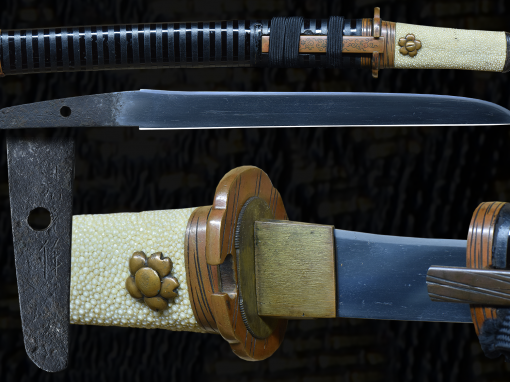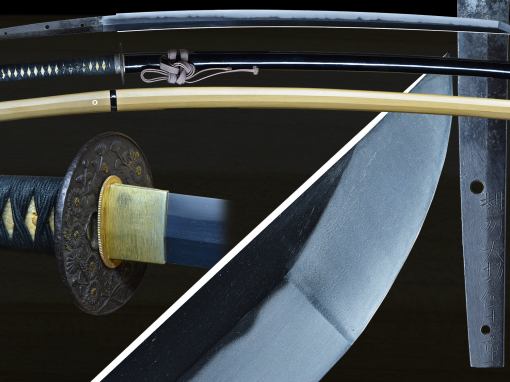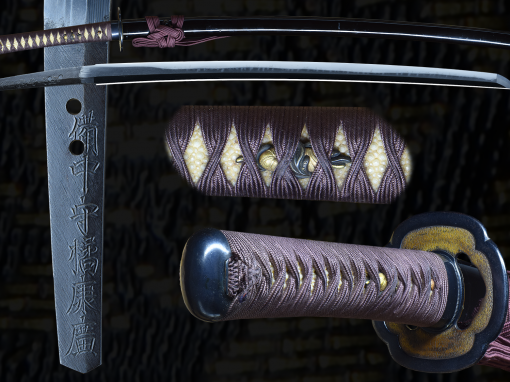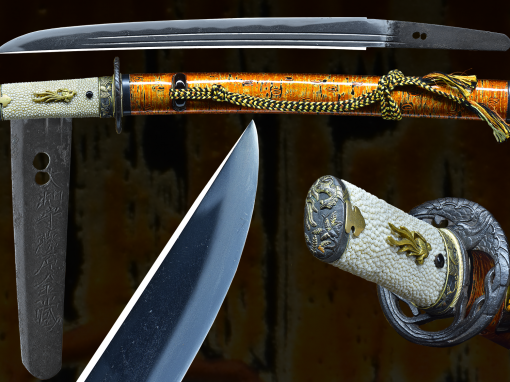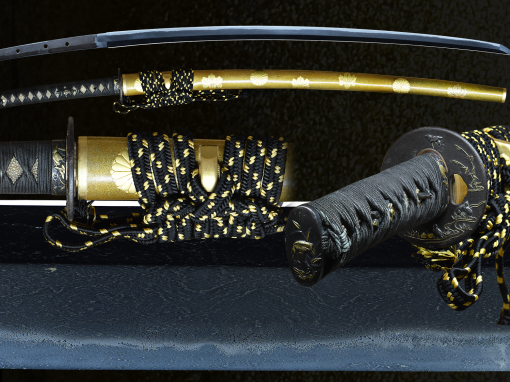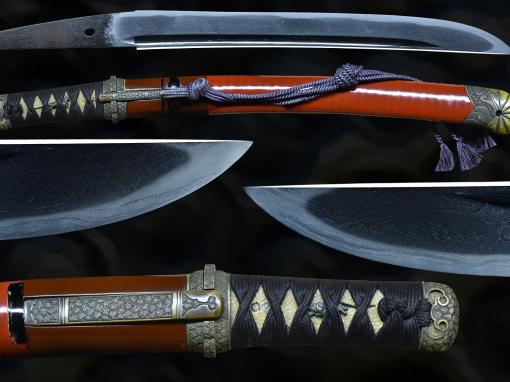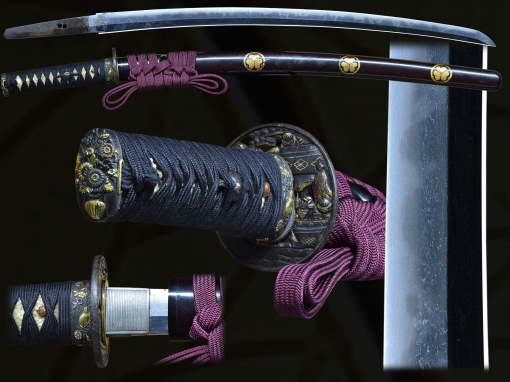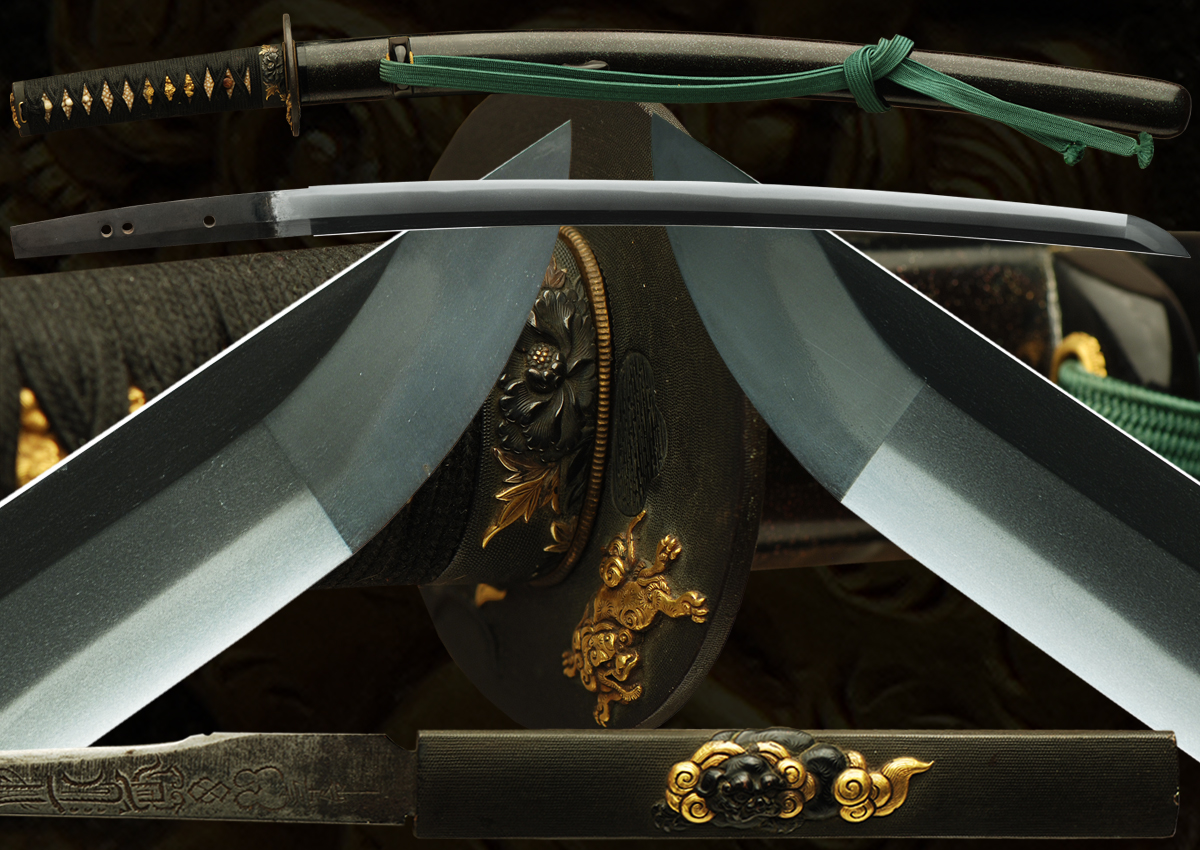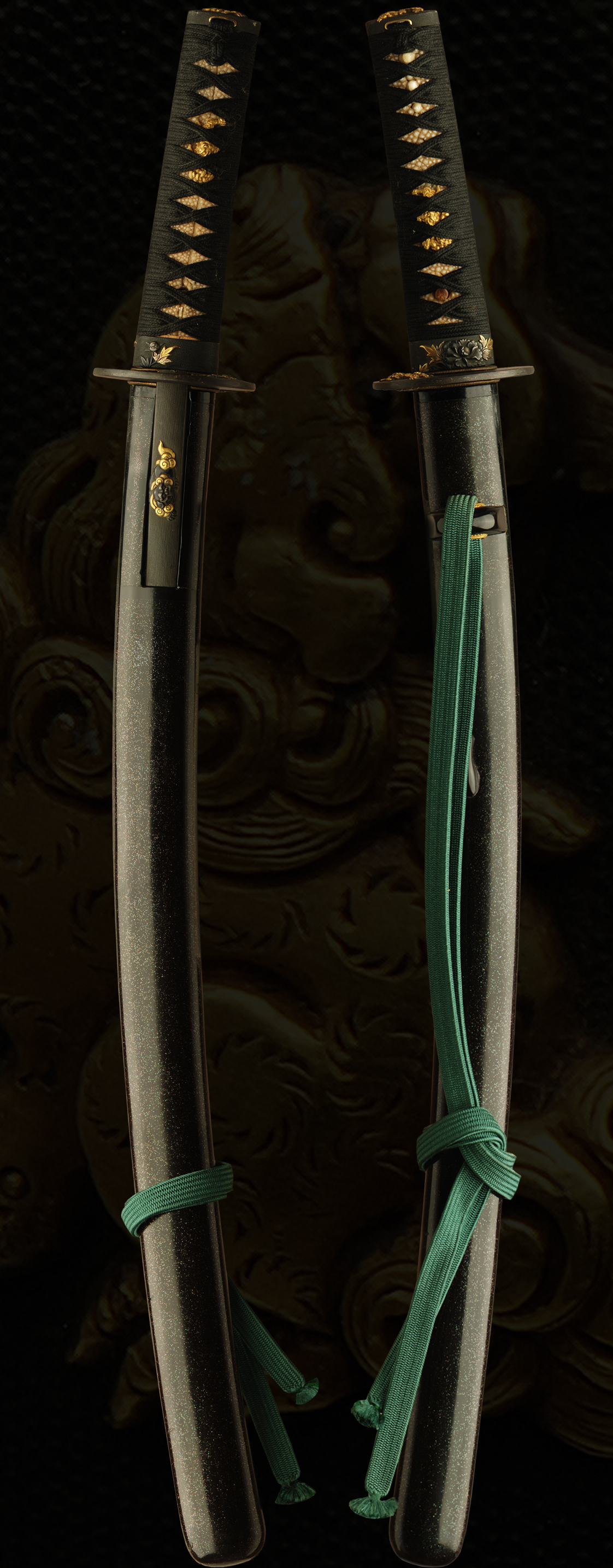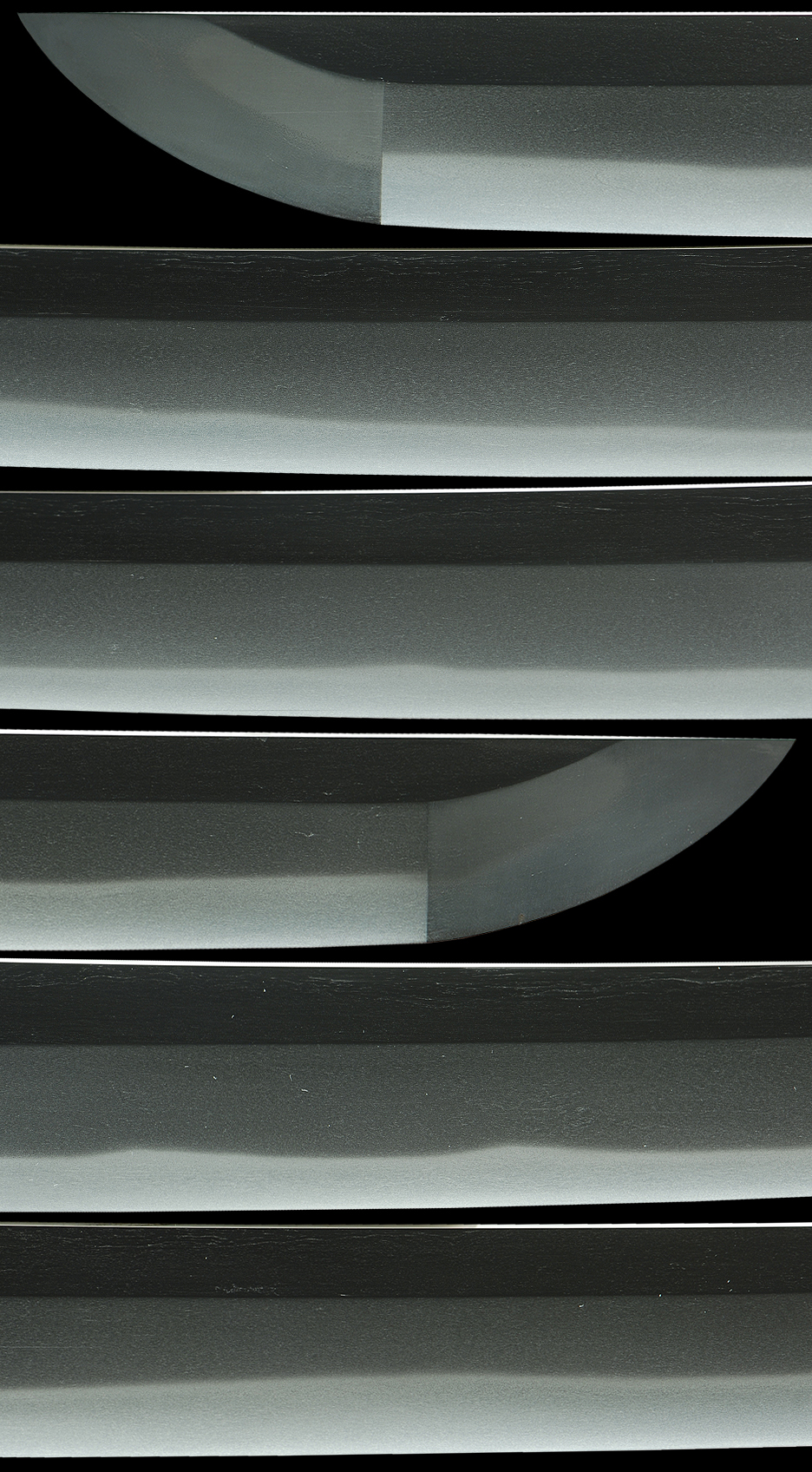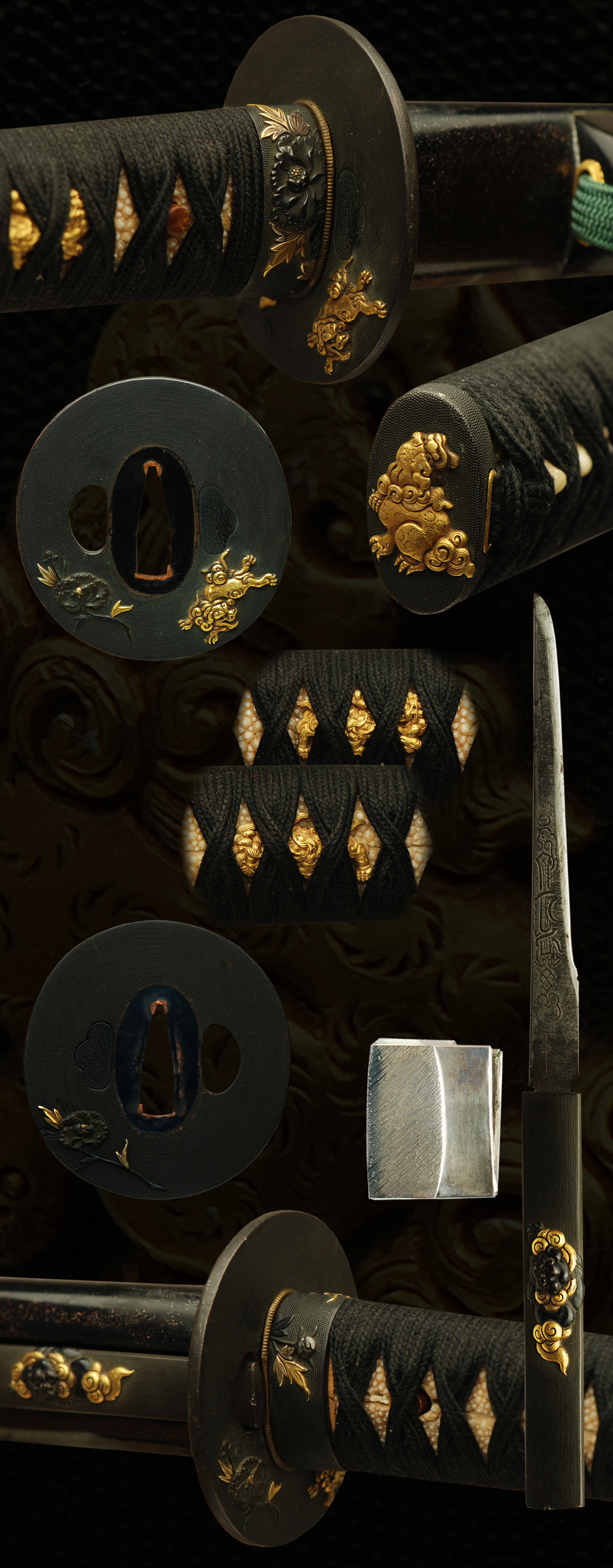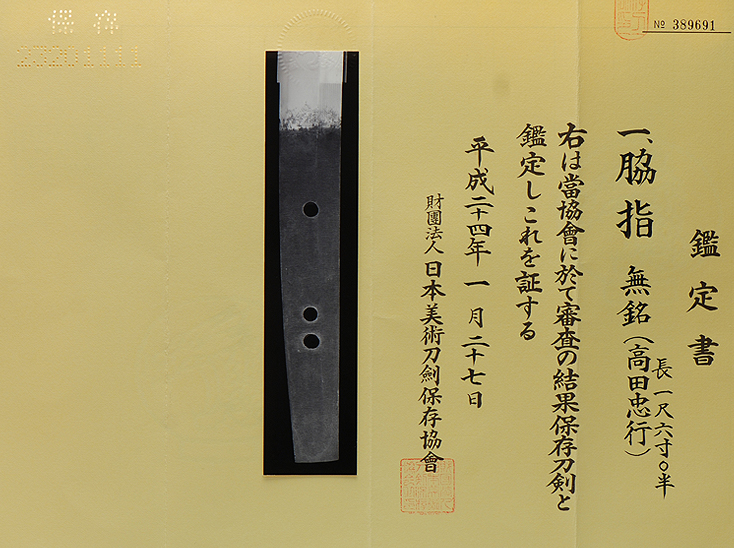The Bungo province in Kyushu produced such excellent sword-smiths as Yukihira in the Koto times. The Bungo Takada school was founded by Tomoyuki in the Nanbokucho period. Tomoyuki is considered to have been a superior sword-smith. With the passage of time it is generally felt that the quality and style declined and by the Muromachi period all of the works were pretty much the same.
There are different schools of thought on the quality of Bungo works made in the Shinto period. Members of this school are also known as the Fuijwara Takada because they used Fujiwara as a family name in their signatures. An immediate response from many “sword experts” when Bungo works are mentioned is that they are not swords of great quality. Others feel that they are good swords. Perhaps the foundation of this difference of opinion is that if you look at the structure of Bungo Takada swords, you will see that they were made to satisfy practical rather than artistic needs. Indeed, at times they were sought out because of their cutting ability and sturdiness. Bungo and Fujiwara takeda both used many different styles of hamon due to the transference of knowledge from the many schools in close vicinity to them.
It is said that the founder of the Bungo Takada school was Tomomitsu or Tomoyuki.
Takada Swordsmiths in the Shinto age engraved the last name “Fujiwara”, and so they are called the Fujiwara Takada.
One of the neighbors of the Takada school was the Hizen school.
Hizen sword makers were controlled by Nabeshima daimyo and imported western steel from Holland which is called Nanbantetsu.
It is believed that the Hizen sword makers used this steal and mixed this up with Japanese Tamahagane to produce their unique and beautiful ji-gane.
Hizen jigane was very different from the Takada school. The Takada school made swords that cut well.
In the Early stages from late Muromachi to Kanbun era, The Takada school swords were of high reputation for cutting well with very good jigane.
This sword is very beautiful and well made showing the true quality that were made by the takada smiths. The sword is a tightly forged ko-itame with ji-nie which reminds one of the Hizen hada. (Many fujiwara takada ji-gane is often mistaken for Hizen Ji-gane.) There is much ji-nie with a brilliant moist misty quality to it. The hamon is a thick undulating sugu-ha with a perception of depth when viewed properly and is quite a gorgeous quality blade.
The Koshirae is stunning with a ShiShi and Peony motif finished in shakudo and gold. The saya is a seashell suspension in lacquer with a greenish hue and brown ito and green sageo to finish. The sword it attributed to Takada Tadayuki from the early Edo period. A great package papered and polished and ready for the collector.
- Mei: Mumei
- Date: Edo (1600’s)
- Nagasa: 19-1/8 inches
- Sori: 12.0 mm
- Width at the ha-machi: 30.7 mm
- Width at the yokote: 21.7 mm
- Thickness at the mune-machi: 7.2 mm
- Construction: Shinogi zukuri
- Mune: Iori
- Nakago: suriage
- Kitae: ko-Itame
- Hamon: suguba
- Boshi: Maru
- Condition: Good polish
(shipping and insurance included)
Email us if your interested in this item and remember to include the order number for this item: fss-770.
Click to Enlarge Image
Click to Enlarge Image
KANTEISHO
1, WAKIZASHI
MUMEI: (Takada Tadayuki)
Length: 1 shaku 2 sun 6 bu
The above item, as a result of a shinsa at this organization, has been designated a HOZON TOKEN, and is confirmed as being authentic.
NBTHK
For Sale
